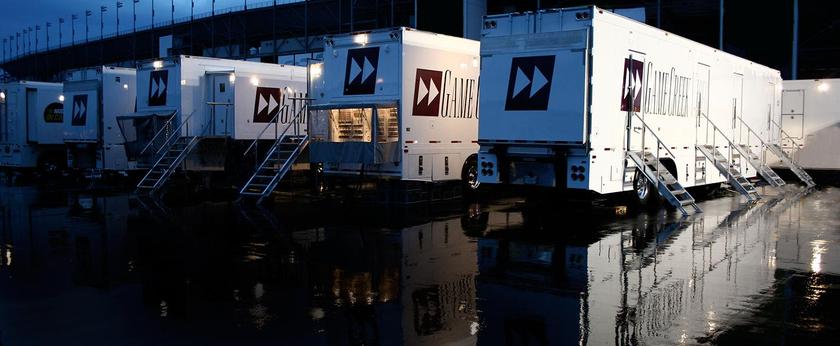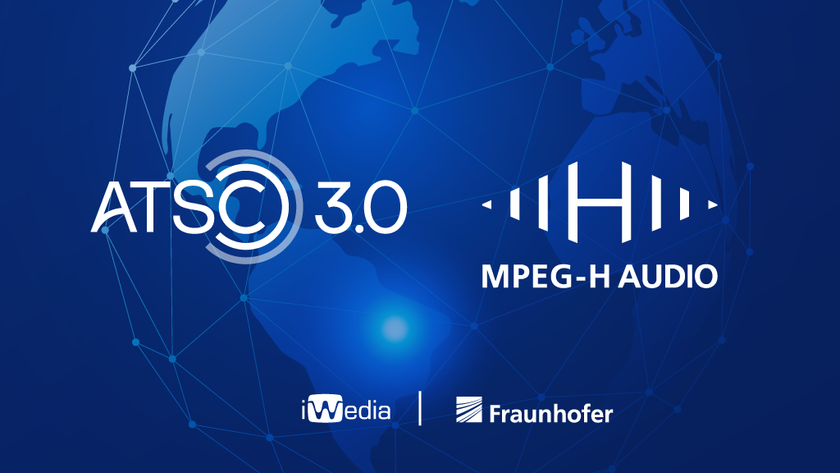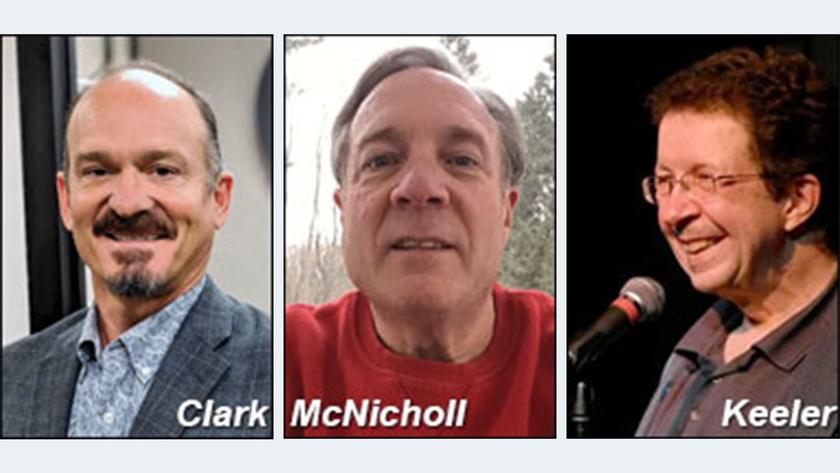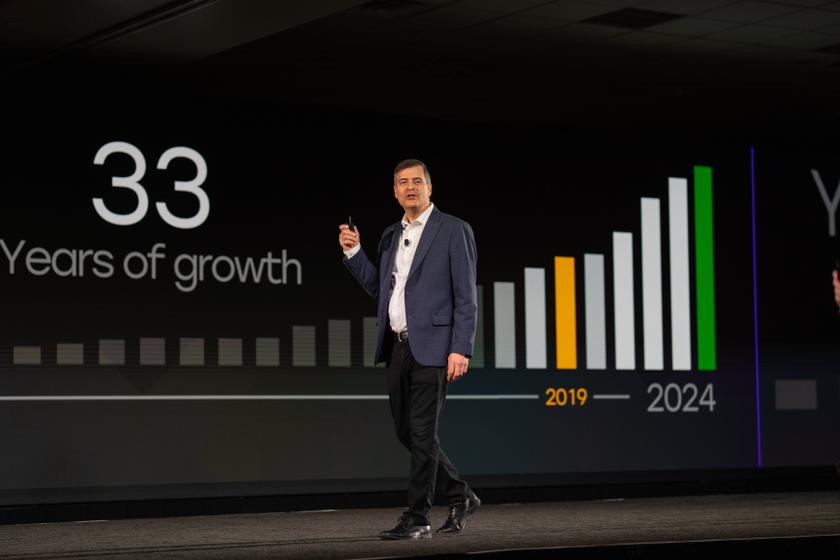LG, GatesAir, Zenith to Conduct Six-Month OTA ATSC 3.0 Tests

ALEXANDRIA, VA.—The search for the next-generation standard of broadcast television will lead to Cleveland later this month. There, a team from LG, Zenith and GatesAir will use an abandoned UHF transmitter at Tribune Media station WJW to conduct extensive on-air tests of its Futurecast ATSC 3.0 physical-layer technology proposal.
The tests at WJW’s old UHF DTV transmitter, switched off in 2009 with the analog sunset when the station moved its DTV broadcast to Channel 8, have a Special Temporary Authorization from the FCC for six months of operation. Co-developed by LG Electronics, its U.S. R&D subsidiary Zenith, and GatesAir, Futurecast can be used to deliver 4K/UltraHD content and two robust mobile TV streams in a single 6-MHz channel, while allowing indoor reception that is more reliable than the current ATSC 1.0 standard. The technology can also deliver HD content.
Futurecast had two over-the-air tests in 2014, with the second one at TV station WKOW in Madison, Wisc., that was observed by a group of industry experts. A report of this test was posted by Broadcast Engineering Extra in October 2014, “Quincy Group, LG/Zenith, Gates Air Demo 4K Futurecast.”
The tests at WJW’s unused UHF transmitter will give the Futurecast team the chance to test the modulation scheme at all hours, over a continuous timeframe. In addition, the terrain in the Cleveland area is widely varied, with tall buildings downtown, flat farmland in one direction, hills in another, and a large body of water—Lake Erie—bordering the city. The FCC coordinated the test with Canada, since the signal will almost certainly cross the lake and reach that country.
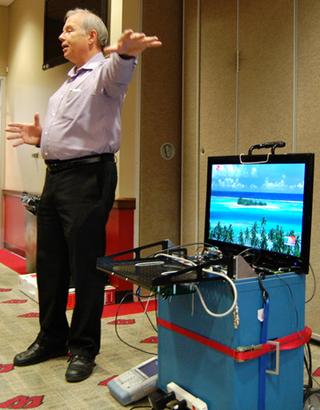
Tim Laud of LG/Zenith discussess the system’s 720p signal during the October 2014 Futurecast test in Madison, Wisc.
“Since our Wisconsin field tests last summer and fall, we’ve continued to make improvements and refinements to the Futurecast system,” said Dr. Skott Ahn, president and chief technology officer for LG Electronics, co-developer of the Futurecast system. “We’re looking forward to testing our physical layer solution at another location that offers the opportunity to test during the day and in the evening.”
As demonstrated in the Madison, Wisc., demo, Futurecast’s proposed ATSC 3.0 system will run on an ATSC transmitter with the ATSC exciter swapped out for a Futurecast exciter. The system will work with existing RF amplifiers, antennas and mask filters, as long as the transmitter is turned down slightly to compensate for Futurecast’s higher peak-to-average ratio, as compared to ATSC. The unused DTV transmission system at WJW includes a three-tube IOT amplifier rated at 60 kW total, with an ERP of more than 600 kW.
Get the TV Tech Newsletter
The professional video industry's #1 source for news, trends and product and tech information. Sign up below.
The Futurecast team expects to take a couple of weeks to sweep the cobwebs out of the unused UHF transmission system at WJW, then begin test broadcasts in May. Once broadcasting is underway, it will allow for test scenarios that were difficult to arrange during the two brief tests that occurred in 2014.
"This will give us an opportunity to check during the day as well as the night,” said Wayne Luplow, vice president of Zenith’s R&D lab. “This makes it a lot easier to find test locations—it’s hard to get indoor locations in the middle of the night.”
One of the tests the team plans to conduct will be to compare the robustness of Futurecast’s mobile stream to a mobile ATSC-M/H feed. The Futurecast team contends that a robust stream using its OFDM modulation is far more likely to get through than an ATSC-M/H feed, especially indoors in concrete-and-steel city buildings.
The tower and transmission building to be used for this extended test are the ones that WJW now uses for its Channel 8 transmission. The station had used Channel 31 for its DTV feed during combined analog/digital operations, but opted to convert its Channel 8 transmitter to digital when the analog signal was turned off in 2009. Since then, the Channel 31 transmitter (a Comark unit) was fired up briefly in 2011, but has otherwise been dormant.
At the moment, the Futurecast team’s plan is to restore the Channel 31 transmitter using ATSC 1.0 with an M/H feed, and conduct extensive measurements of the signal’s coverage and penetration. Once ATSC operation is measured and cataloged, the transmitter will be switched to an ATSC 3.0 exciter and tests will be performed again. Field teams will conduct measurements and possibly even record RF samples that can be analyzed in a laboratory.
In the meantime, the LG/Zenith/GatesAir team learned from the brief OTA trials in 2014 and is making modifications based on that experience.
“We learned some things doing the field testing in Madison,” Luplow said. “That gave us an opportunity to tweak some things, mostly algorithms in the receivers.”
Although the Futurecast team took the initiative to get this test started, Luplow expects a consortium that involves other organizations (such as the ATSC) will eventually join the test process at WJW. If six months is not enough time for all interested parties to complete testing, it is expected that the FCC would favorably consider an extension of the STA.
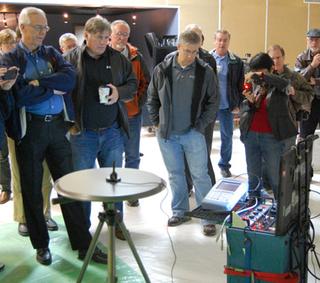
A group observes a test of a robust Futurecast reception inside a steel-sheathed building in Madison, Wisc. The antenna for the test receiver is the 8-inch tall device on top of the disk in the left foreground.
“NAB and NAB Labs are looking to set up what I call a ‘neutral-host facility’ and have a place where we are able to validate and test all the various layers, first and foremost starting with the physical layer,” said Sam Matheny, chief technical officer of the NAB. “We’re so grateful to Tribune for offering its facility to use, because we think it’s a great location to do the type of testing that has to be done.”
LG and GatesAir are picking up the costs to restore the transmission facilities and pay for the electricity, as well as provide engineers and technicians for the test. Engineers from WJW will assist in getting the plant up and running, and Tribune Media will allow use of the equipment at no cost to the Futurecast team. Future operation costs are expected to be shared among other organizations that join the testing at WJW.
Although the consortium behind Futurecast is promoting it as the physical layer in the upcoming ATSC standard, the team members expect to work with the ATSC and other organizations on the standards-creation process.
“We are supportive of the 3.0 process,” Luplow said. “We’re not trying to do an ‘end run’ around ATSC—we love the ATSC and we’ve always been part of it.”
During the testing of what is now known as ATSC 1.0, a model station was established at WRC, an NBC O&O property in Washington. It was at this station that various products and techniques were tested during the approval of the ATSC 1.0 standard.
If the Futurecast team moves forward with its plan to use WJW’s mothballed UHF transmitter in Cleveland, that very well could become the model station for ATSC 3.0 testing and approval.
Bob Kovacs is the former Technology Editor for TV Tech and editor of Government Video. He is a long-time video engineer and writer, who now works as a video producer for a government agency. In 2020, Kovacs won several awards as the editor and co-producer of the short film "Rendezvous."

FCC Unveils Tentative Agenda for April Open Meeting
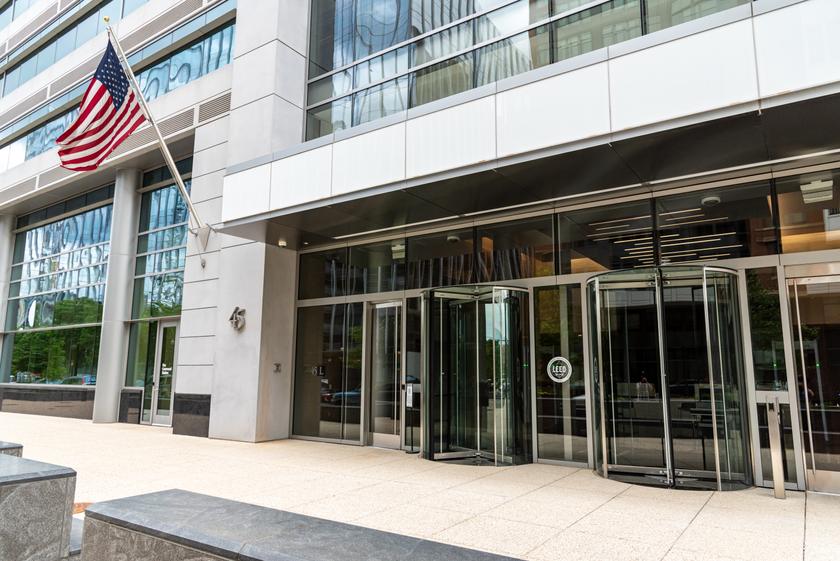
NAB Urges FCC to “Completely Repeal” Broadcast TV Ownership Restrictions


